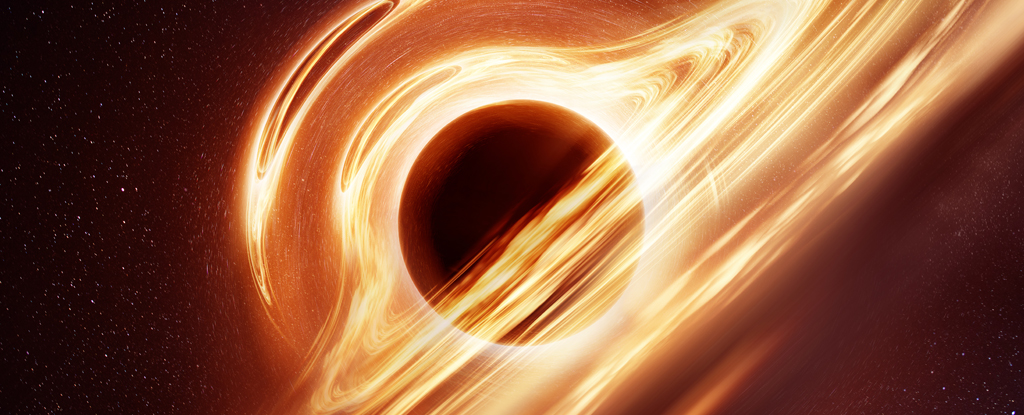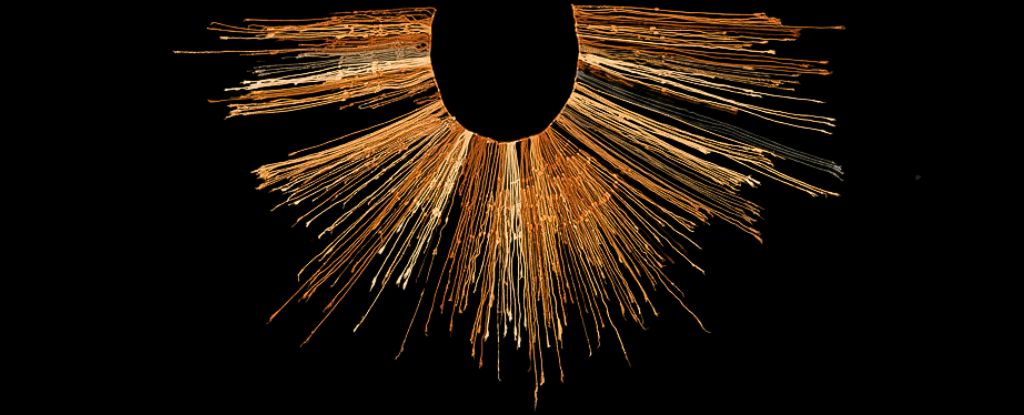black holes are bizarre things, even by the standards of astronomers. Their mass is so great that it warps the space around them so much that nothing can escape, not even the light itself.
And yet, despite their famous blackness, some black holes are easily visible. The gas and stars that engulf these galactic vacuums are sucked into a glowing disk before their one-way journey down the hole, and these disks can shine brighter than entire galaxies.
Stranger still, these black holes sparkle. The brightness of the glowing discs can vary from day to day, and no one knows exactly why.
We piggyback on NASA’s asteroid Defense efforts to observe more than 5,000 of the fastest growing black holes in the sky for five years to understand why this twinkle occurs.
In new paper in natural astronomywe report our answer: a kind of turbulence driven by friction and intense gravitational and magnetic fields.
Gigantic star eaters
We study supermassive black holes that sit at the centers of galaxies and are as massive as millions or billions of suns.
Our own galaxy, the Milky Way, has one of these giants at its center, with a mass of about four million suns. The roughly 200 billion stars that make up the rest of the galaxy (including our Sun) are for the most part happily orbiting the Earth black hole downtown.
However, not all galaxies are so peaceful. When pairs of galaxies pull together due to gravity, many stars may be pulled too close to their galaxy’s black hole. This ends badly for the stars: they are torn and devoured.
We’re confident that this must have happened in galaxies with black holes weighing as much as a billion suns, because we can’t imagine how they could get so big otherwise. It could also have happened in the Milky Way in the past.
Black holes can also feed more slowly and gently: by sucking in clouds of gas ejected by geriatric stars called red giants.
feeding time
In our new study, we closely examined the feeding process of the 5,000 fastest growing black holes in the universe.
In previous studies, we have discovered the black holes with the most insatiable appetites. Last year we found a black hole that eats a whole lot of stuff every second. In 2018 we found one who eats a whole sun every 48 hours.
But we have many questions about their actual eating habits. We know that as material spirals into the hole, it forms a luminous “accretion disk” that can be bright enough to outshine entire galaxies. These visibly feeding black holes are called quasars.
Most of these black holes are very, very distant – far too far away for us to see any detail of the disk. We have some images of accretion disks around nearby black holes, but they’re just breathing in some cosmic gas rather than feasting on stars.
Five years of flickering black holes
In our new workwe used data from NASA’s ATLAS telescope in Hawaii. It scans the entire sky each night (weather permitting), keeping an eye out for asteroids approaching Earth from the outer darkness.
These all-sky scans also happen to provide a nighttime record of the glow of hungry black holes deep in the background. Our team has put together a five-year movie of each of these black holes, showing the diurnal changes in brightness caused by the accretion disk’s bubbling and boiling luminous vortex.
The twinkling of these black holes can tell us something about accretion disks.
In 1998, astrophysicists Steven Balbus and John Hawley proposed a theory of “magnetorotatory instabilities” which describes how magnetic fields can cause turbulence in the discs. If that’s the right idea, then the discs should sizzle in regular patterns.
They would sparkle in random patterns that unfold as the disks orbit. Larger disks orbit more slowly with a slow twinkle, while tighter and faster orbits flash faster in smaller disks.
But would the discs turn out to be that simple in the real world, without further complexity? (Whether “simply” is the right word for turbulence in an ultradense, runaway environment embedded in intense gravitational and magnetic fields, where space itself is bent to the breaking point, is perhaps another question.)
Using statistical methods, we measured how much the light emitted by our 5,000 discs flickered over time. The flicker pattern looked a little different on everyone.
But when we sorted them by size, brightness, and color, we discovered intriguing patterns. We were able to determine the orbital speed of each disc – and once you set your watch to run at the disc’s speed, all the flickering patterns looked the same.
This universal behavior is actually predicted by the “Magneto-Rotational Instabilities” theory.
That was comforting! That means these amazing maelstroms are “simple” after all.
And it opens up new possibilities. We believe that the remaining subtle differences between accretion disks are due to viewing them from different directions.
The next step is to examine these subtle differences more closely and see if they hold clues to spot a black hole’s orientation. Finally, our future measurements of black holes could be even more accurate.
Christian WolfAssociate Professor, Astronomy and Astrophysics, Australian National University
This article is republished by The conversation under a Creative Commons license. read this original article.





